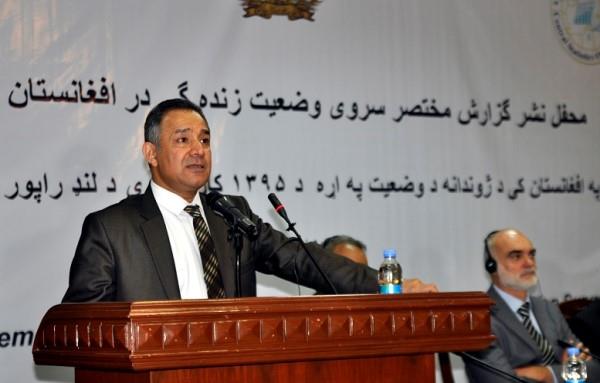
403
Sorry!!
Error! We're sorry, but the page you were looking for doesn't exist.
Afghanistan poverty rate 21pc up in 10 years: Survey
(MENAFN- Pajhwok Afghan News) KABUL (Pajhwok): A new survey shows the extreme poverty line in Afghanistan has gone 21 percent up compared to what the parity had been a decade ago. The survey records a 23 percent surge in literacy rate in the war-ravaged nation during the period. Conducted by the Central Statistics Organization (CSO), the survey released on Sunday in Kabul indicated a 40 percent improvement in healthcare services for expected mothers during the past 10 years.
The SCO conducts surveys once in two years about people's livelihood in Afghanistan in financial cooperation with the European Union, the World Food Program and the World Bank .
Prof. Hasibullah Moahid, CSO deputy head, announced the result of the sixth survey on people's livelihood in Afghanistan. He said the organization surveyed 21,000 families or 156,000 people in all provinces of the country.
He said the level of poverty increased from 38 percent in 2012 to 54 percent in 2016. The figure for poverty threshold in 2016 in Afghanistan was spending below 2,064 afghanis a month.
Moahid said the poverty ratio used to increase in winter compared other seasons and reduce in summer.
He added 13 percent of Afghans lived without having own houses. More than 70 percent of urban populations lived in poor neighborhoods or in inappropriate houses, he said. He said 44 percent of people lived in congested apartments or more than three persons per room.
Food safety
The survey shows that four among 10 people have no food safety. According to the survey, eating less than 2,100 calories a day means the lack of food security.
Workforce
The survey says a major part of the country's economy is disorganized, informal and illegal with livelihood being financed based on informal work, low wages, child labor, migration for work and hard labor.
It shows a little more than half of the country's workforce is engaged but around two million people are jobless across the country. Most of the workforce is associated with agriculture and the least of them are working in areas of electricity, liquefied gas and water, the survey notes. Except factories and industry, men's partnership is higher in all other areas compared to women, the survey finds.
It says women's partnership in industry is 64 percent, in agriculture 33 percent and in private, social and local services their share is 10 percent and in finance, insurance and entrepreneurship is four percent, in business two percent and in constructions, mines and transport is less than one percent.
nh/mds/ma

Legal Disclaimer:
MENAFN provides the
information “as is” without warranty of any kind. We do not accept
any responsibility or liability for the accuracy, content, images,
videos, licenses, completeness, legality, or reliability of the information
contained in this article. If you have any complaints or copyright
issues related to this article, kindly contact the provider above.















Comments
No comment